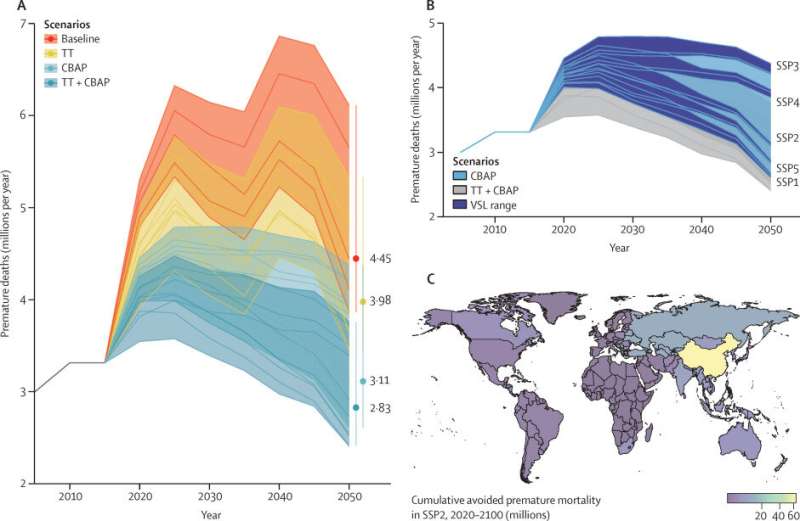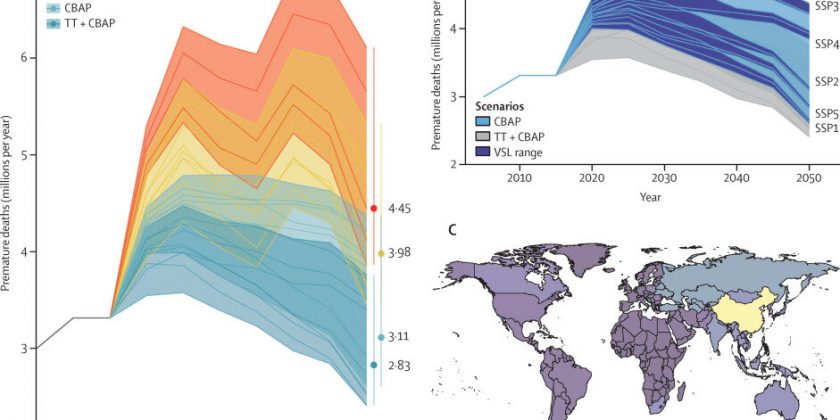
Accounting for air pollution impacts reduces climate mitigation costs without increasing inequality and increases global and regional welfare. A comprehensive integrated assessment modeling framework capturing the most critical interactions between air pollution, climate mitigation and the economy, in the study led by RFF-CMCC European Institute on Economics and the Environment (EIEE) just published in The Lancet Planetary Health.
Climate change and air pollution are two major societal problems. Air pollution is responsible for millions of deaths worldwide and crop loss every year. Both climate change and air pollution share a common origin—fuel burning—and a common solution—a clean and fair energy transition. But which policy and technological interventions should be put in place, and when? Their complex interplay calls for an advanced evaluation framework that can support decision making. Previous assessments have looked at the co-benefits of climate policies for air pollution, but few have optimized air pollution benefits.
The study lays out a modeling framework that internalizes the economic impacts of air pollution on human mortality, while considering climate constraints and aerosol feedback. Results show how welfare-maximizing strategies accounting for air pollution benefits generate considerable health benefits, avoiding 1.62 million of annual premature deaths by mid-century, a figure that is three times greater than the co-benefits of climate policies.
“This study develops and implements a benefit-cost, integrated air quality-climate modeling framework,” explains Lara Aleluia Reis, researcher at RFF-CMCC European Institute on Economics and the Environment (EIEE) and lead author of the study. “We highlight how health benefits of optimized air pollution interventions are greater than climate mitigation co-benefits alone, and in case of delayed climate action are essential to keep mortality at lower levels. Air pollution reductions are mainly achieved via end-of-pipe technologies (EOP), especially at the beginning of the century and when no climate policy is in place. This result speaks to the importance of EOP measures in the first half of the century. This is the first global study to optimize structural and end-of-pipe investments to mitigate air pollution and to simultaneously attain the Paris Agreement temperature objectives of 1.5 and 2°C.”
The researchers proposed a comprehensive optimisation modeling framework that internalizes the air pollution impacts on human mortality into the optimization of climate policies and accounts for the aerosol reductions from the air pollution policies. They analyzed a vast set of scenarios that have different air pollution control baselines, several assumptions about how to economically value health, and how deep and fast international climate policies will unfold, allowing them to deal with uncertainties about their assumptions and to identify robust conclusions.
Source: Read Full Article
